Tu
Eastside
Close
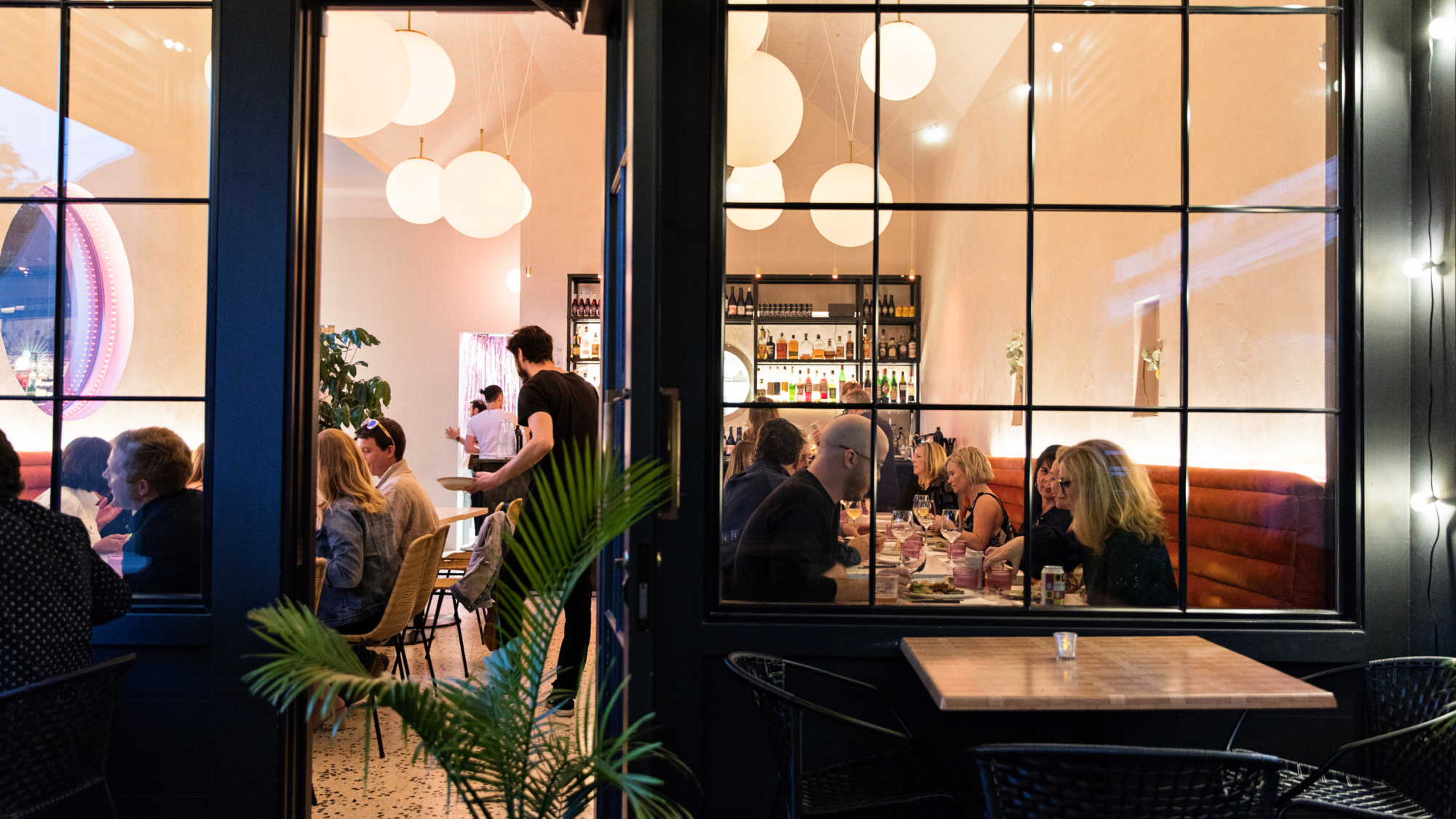
Chef Joshua Walker of Tu began his career in design—working as an artist and designer in New York, prior to parlaying that creative vision to restaurants—and it’s a background that shines through at each of his establishments.
The first, Xiao Bao Biscuit, a Pan-Asian eatery co-owned by wife Duolan Walker-Li and business partner Joey Ryan, opened in late 2012 and occupies a rustic former gas station in the Cannonborough neighborhood. In the years since, the restaurant has become a welcome addition to the dining landscape of the city (the lively and fun vibe, coupled with seasonal updates to signature Asian dishes, means a constant influx of regulars), but Walker acknowledges that the beauty of this first concept’s design was how it came together naturally, “Xiao Bao was a great project because it didn’t take a lot to look interesting and appealing. It had this run-down, cool aesthetic that worked with our vibe and our food.”

If XBB came about organically—albeit serendipitously—then the trio’s latest endeavor, Tu, bears the mark of Walker’s artistic roots. “The cool thing about the [Tu] property was that it was an old Charleston single with an empty lot,” Walker said. “We started to realize we could do a strange 90-degree angle building/kitchen/old house thing. I thought it was an interesting space because it’s about the old meeting the new.“
“Everything we try to do with our restaurants is very much in our own style and speaks from the heart. We all do this because we love it. And, hopefully, that shows.”
Walker’s vision has manifested in a hip, unconventional space designed to be reminiscent of a house party and encompassing four distinct dining areas. The original Charleston single now features a cozy room with a single large table adjacent to a dark and moody space, with black walls and low lighting. The main bar and dining area feature orange velvet banquettes and large globe lighting, plus an adjoining outdoor seating space. This new area is modern and funky; somehow reminiscent of a Stanley Kubrick set. “I want the restaurant to be an expression of who we are– the music we play, how it looks, how it feels. All of that really impacts the overall experience,” Walker shared.
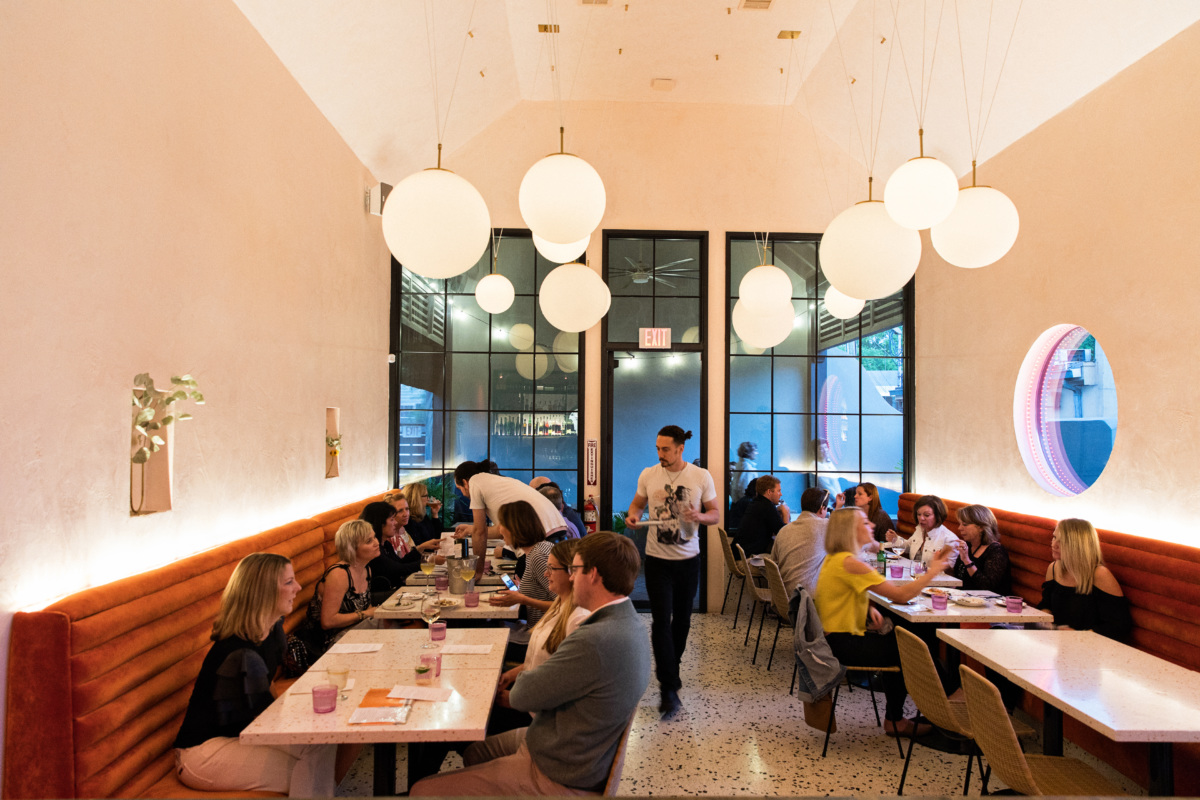
Aside from the eclectic mid-century decor, the food also has a notable impact on the experience, and it is here that Tu aims to dazzle. “We’re still defining the restaurant certainly, but what I keep hitting on with the food at Tu is multi-layered. It’s about nostalgia and tied to a comfort food aesthetic, but it’s also an exploration of flavors from all over the world.”
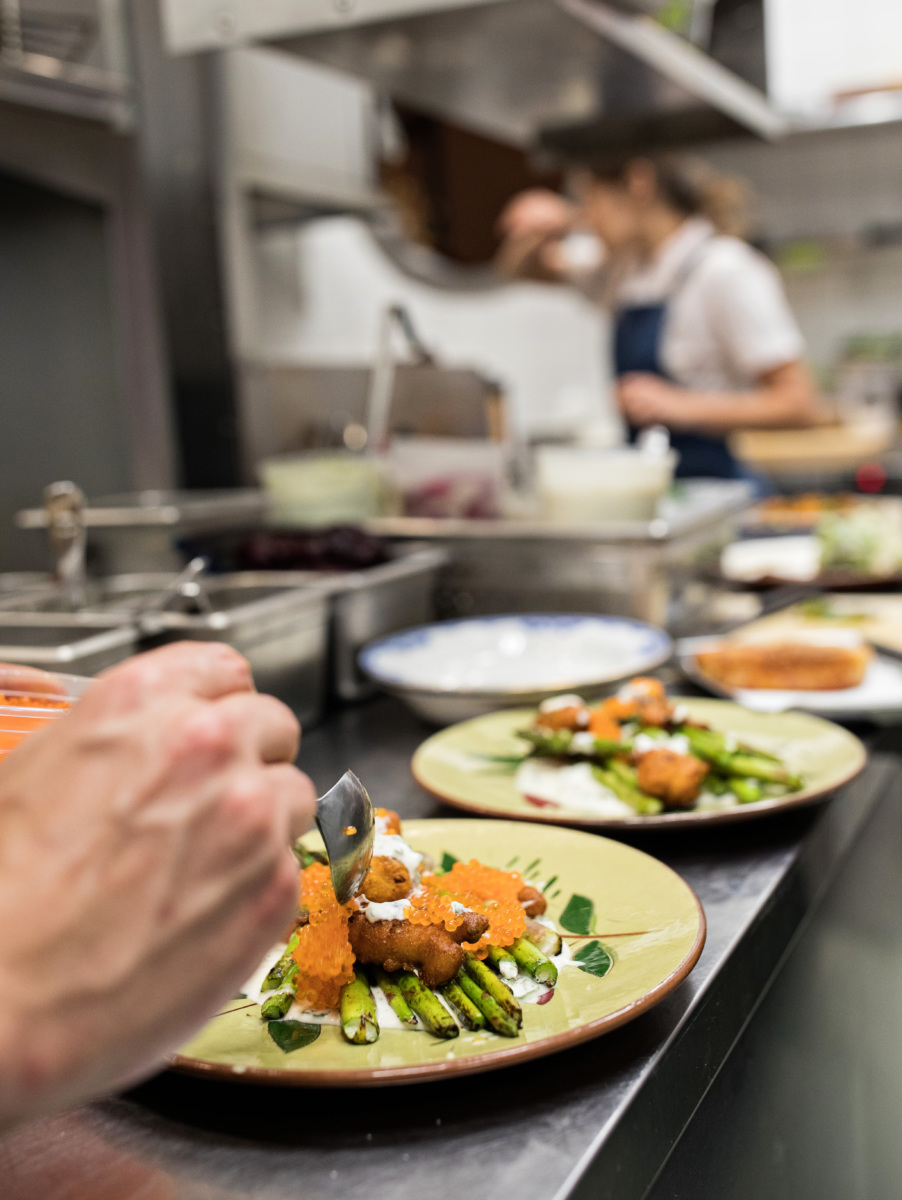
While XBB draws from a variety of cuisines, it can still be summarized in a relatively straightforward manner as ‘an Asian restaurant.’ Tu is not so easily defined. Reflecting on his latest endeavor, Walker noted, “I think with Tu our challenge is that it can’t be summed up so clearly. But if your experience can be so quickly described, maybe it’s not as memorable? That’s certainly our goal: To do food that is unique and interesting.”
Even the restaurant’s name is a bit of a puzzler. In French, Italian and Spanish, ‘Tu’ is the informal form of ‘you.’ With South American and Spanish-influenced dishes on the menu, it seems perhaps the obvious interpretation of the name. Walker agrees with this analysis…sort of. “Well, yes. In Mandarin chinese, [Tu] means Earth. And the character for it is basically the opposite of the character for heaven, kind of like ‘everything under heaven’.”
Not surprisingly, it turns out that a menu inspired by ‘everything on Earth’ runs the gamut from a local fish crudo made with guava and snowy flakes of ‘cheese ice’ to bok choy with Hari Krishna. (Ed note: ‘Hare Krishna’ as in religious organization? Once again, the answer is ‘sort of.’)
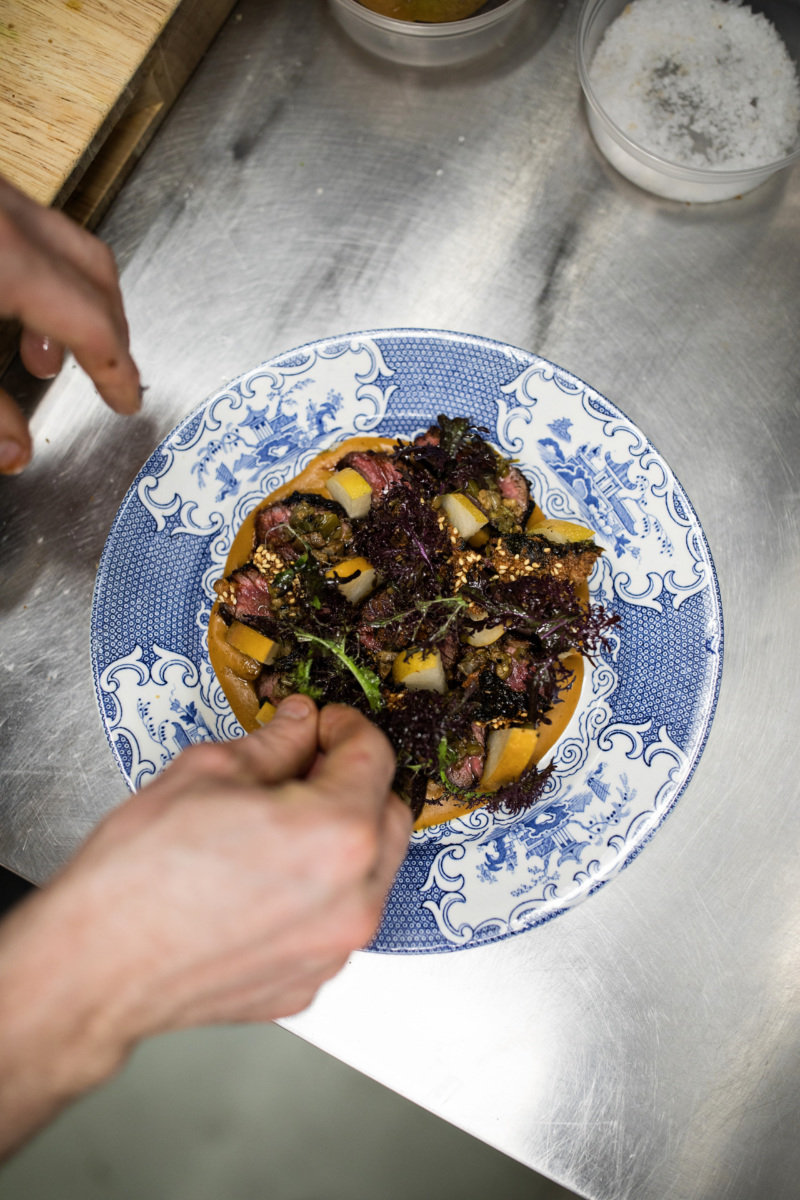
“On the original menu, that dish started out as an iceberg wedge salad,” Walker laughed. “Then we changed it to a greens dish, so now it’s a lightly cooked bok choy, which helps reset the palate.”
As for the Hare Krishna—which is where Tu’s famous and signature salad dressing can be attributed to—Walker explains: “In Gainesville, at the University of Florida, there’s a regular vegetarian lunch prepared by the Hare Krishnas. This is their dressing. We got the recipe from them. It’s basically a creamy almond dressing, but it’s got this Indian spice called hing (asafetida) in there. Everyone has tasted it at some point. If you smell it, it will bring back some old memory of Indian cuisine.”
Nostalgia, plus the flavors of the world? Check.
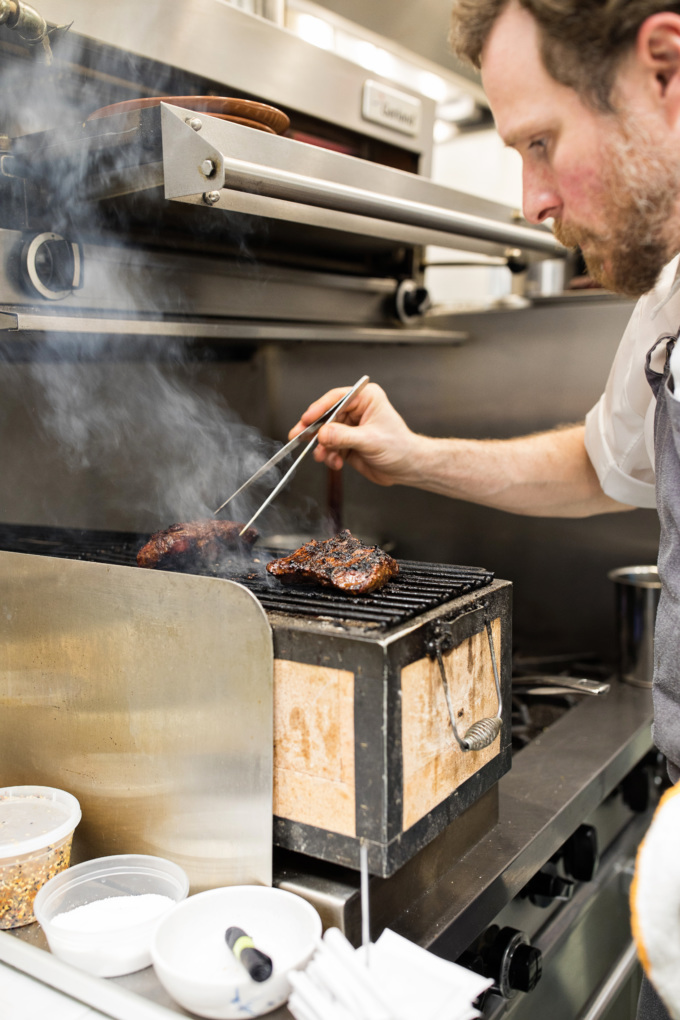
Similarly, the inspiration behind the crudo is equally diverse. “That dish started as Spanish charcuterie,” Walker said. “But instead of cured meats, we have fish. And then we added guava, but you still have manchego cheese. It’s a really weird thing, but it works. With the guava and the ají dulce peppers–which are like habaneros, but without any heat–it’s this fruity, tropical riff on a Spanish charcuterie plate. There are a million things like that that just don’t work at all, but this did.”
While Tu is unabashedly quirky and creative, it maintains a conscious focus on design and a deep, abiding appreciation for the cuisines in the world. Whether drawn by the atmosphere or the cuisine, once inside the revamped Charleston single, one is certain to be delighted by something new and unexpected.